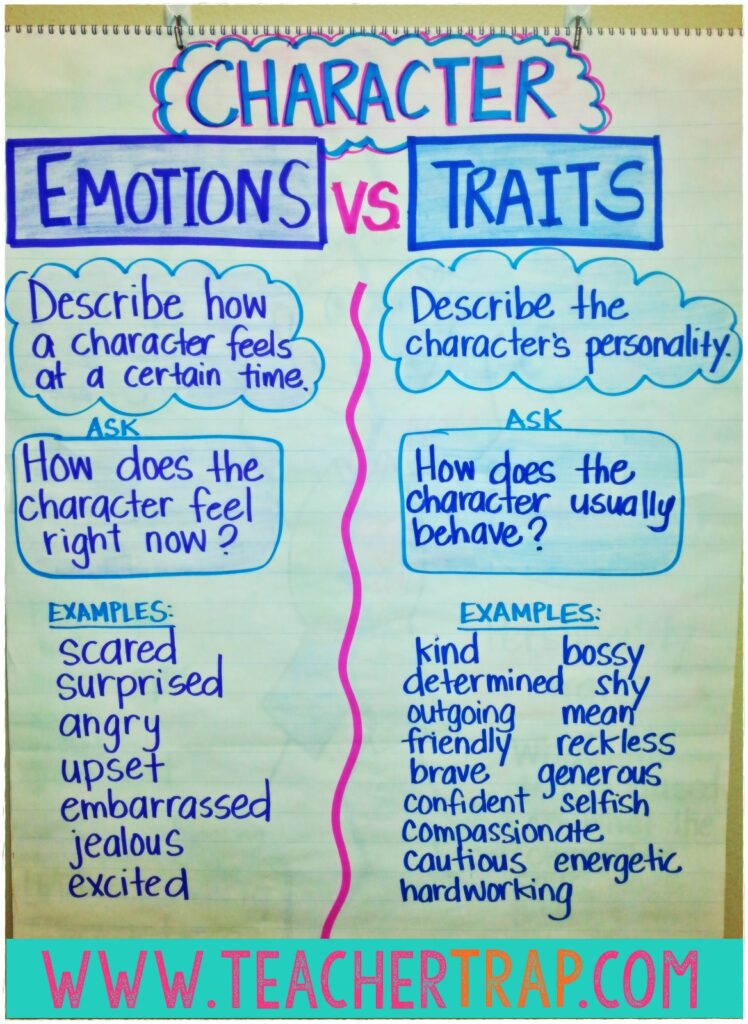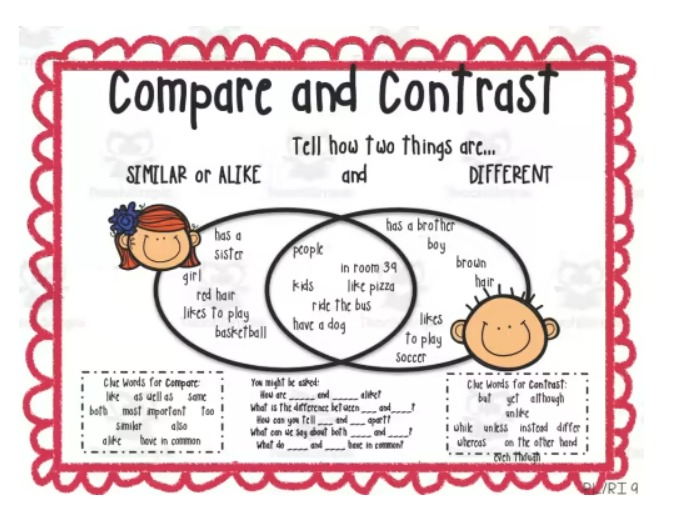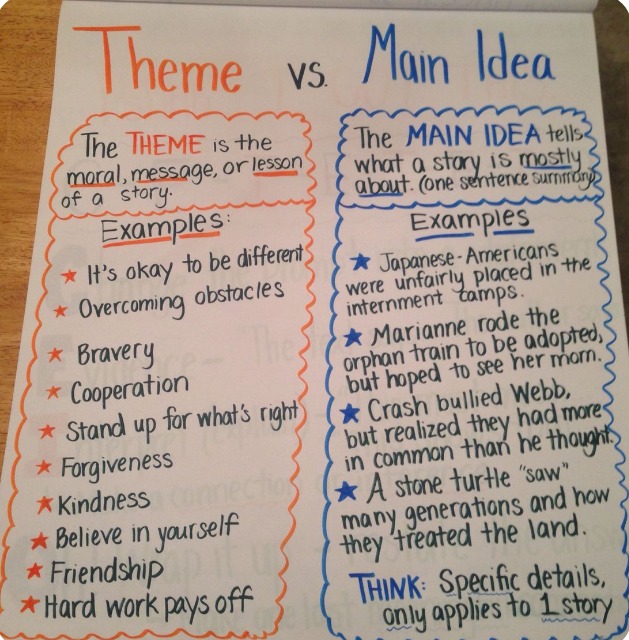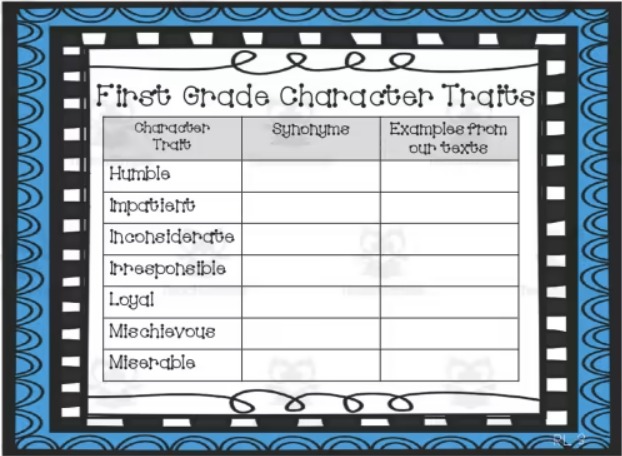All teachers can honestly say there have been times when students strike a nerve. You repeat the same pieces of information over and over again, only for little Bobby to ask you about it two seconds later. It sometimes even feels like they’re trying way too hard not to retain information.
You can use thousands of teaching materials to help you with your classes. You can have the best workbooks, lesson plans, and ebooks—it’s useless if your students don’t gain a new skill or knowledge.
Luckily, there are materials specially made to keep children on track and help you hammer home the information you’re trying to pass on.
In this guide, we’ll show you what an anchor chart is, how to make one, and how to use it in your classroom. We’ll also show you how to take a leaf from your more experienced colleagues’ teacher’s books and download high-quality anchor charts from Teach Simple.
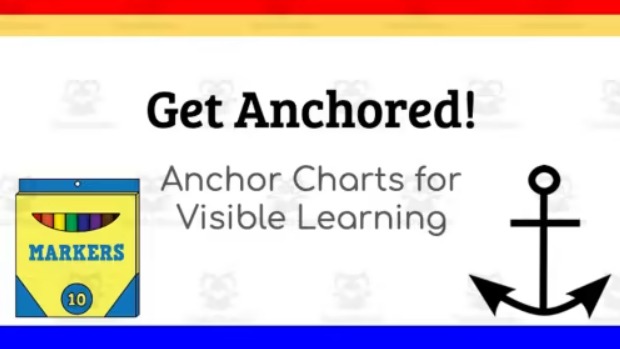
Source: Teach Simple
What Is an Anchor Chart?
An anchor chart, by definition, is organized mentor text used as a tool to support presenting new information and learning in the classroom. In plain English, an anchor chart is a piece of paper that contains the essential information, strategies, and procedures (i.e., steps) of the lesson you’re trying to teach.
As the name says, this tool anchors students and keeps them focused on the objective in front of them, be it improving a skill, gaining new knowledge, or understanding some concepts.
Why Are Anchor Charts Important in the Classroom?
Research on anchor charts in the classroom shows that using these materials can help your students with:
- Emphasizing information
- Providing a visual aid
- Increasing engagement
- Understanding the lesson objective
- Supporting independent work
Emphasizing Information
When you get a class of any number of students, you’ll always have children that are more teachable—you say something once, and they memorize it. Other students take their time and need positive reinforcement and repetition to adopt new knowledge.
An anchor chart is an excellent tool for emphasizing information without repeatedly going over the same principles. Students can use the chart as a reference point and turn to it whenever they need a reminder.
Providing a Visual Aid
Teachers, especially first-year ones, can have trouble explaining some basic concepts. Imagine saying that one plus one is two and being greeted with dozens of Whys.
Many students, younger children, in particular, are better visual than textual learners. An anchor chart as a visual aid enables them to understand and conceptualize new information more easily.
Increasing Engagement
Anchor charts shouldn’t come filled out entirely. Instead, when you create an anchor chart, you should leave empty space for students to fill out. You can also incorporate sticky notes with information written on them so that students can place them in different sections of your anchor chart.
This way, you’ll increase student engagement, develop their critical thinking, and improve their confidence when carrying out other tasks.
Understanding the Lesson Objective
An anchor chart is a valuable tool for students to understand why they’re learning what they’re learning. As they move on, it provides them with a foundation for further learning. For example, when you teach about multiplication and division, they can use their subtraction and addition anchor charts and make connections between them.
Anchor charts are also great if you let students participate in the creation process. Having students make their own anchor charts will deepen their comprehension of the material.
Supporting Independent Work
When you assign your students an exercise to make sure they retain new knowledge, instead of turning to you (or their parents), students can look to anchor charts for help. While you don’t want to kill off the interaction between you and the students, it’s important to develop their independent work. Anchor charts will help them grow a habit of looking up information on their own and learning how to rely on themselves when they get stuck.
How To Make an Anchor Chart
So, what does an anchor chart look like? Since anchor charts are supposed to be visual aids your students should refer to as often as possible, you should ensure they’re pleasant to look at and easy to use. Use the following tips to make sure you’ll make a great anchor chart:
- Make it colorful and playful—Don’t make a monochrome chart that nobody will look at. Try to incorporate different colors and create something eye-catching by drawing a frame, headings, and sections
- Know your audience—A high schooler won’t appreciate cartoonish design as much as a kindergartener would
- Don’t overdo it—While making an anchor chart look pleasant is important, you don’t want to go overboard and make details too distracting. The goal is to make an anchor chart easy-to-use and skimmable
- Use pictures—Remember, an anchor chart should help students visualize the material in front of them. Using pictures and drawings can help you illustrate your point with ease
- Make copies for your students—Having an anchor chart hanging in your classroom helps students focus and can help improve the lesson flow. But how will kids use it when they’re studying at home? Create copies to hand out to your students so that they can fill it out on their own and take them home
- Leave empty spaces—Interaction is the name of the game. You should only write headings and outline different sections. Leave it to students to fill them out with definitions, examples, and step-by-step instructions
How To Use Anchor Charts
Note that an anchor chart is only a part of a lesson plan made for students’ use—don’t use it as a substitute for writing a thorough lesson plan. While you can have an anchor chart for yourself (with solutions and further information), the main anchor charts are for students.
When introducing anchor charts to your classroom, try to reference them as often as possible. If you do this during the class, students will eventually develop a habit of using anchor charts when studying and doing homework. You should lead by example and show them that anchor charts are all they need to remember essential elements.
How To Use Anchor Charts in the Classroom
Aside from handing out anchor charts to students, you can also make a big one to hang in your classroom. You can use hooks, thumbtacks, glue—whatever’s best for your environment. You can even skip printing the chart and use a projector. Displaying an anchor chart will help you draw attention to it, and it’s easier to make it more interactable.
When it comes to interactivity, this is the major part (and a major benefit) of using anchor charts. Get students involved and get them to participate in the anchor chart creation. This can play out in two ways:
- Bring an anchor chart with empty fields for your students to fill out (you can use sticky notes to make it more playful)
- Get students to make anchor charts from scratch as an individual or group assignment
Anchor Chart Examples
You can find many types of anchor charts, depending on the topic, format, and aspects of learning they cover (i.e., is it about skill, knowledge, behavior, etc.). Different types of anchor charts include:
- Interactive anchor charts
- Strategy anchor charts
- Important vs. interesting anchor chart,
- Vocabulary anchor charts
- Background knowledge anchor charts
- Procedure anchor charts
- Process anchor charts
- Content anchor charts
- Steps for research anchor charts
- Articles anchor charts
- Graph anchor charts
- Diagram anchor charts
While you don’t have to use an anchor chart for every lesson, you can use it for any topic you want. For example, if you’re teaching about plants, you can use an anchor chart about different parts of a plant. Still, the most common subjects anchor charts are used for are:
- Math
- Reading
- Writing
Math Anchor Chart Examples
Math is best explained through anchor charts. They make it easier for students to put concepts into context and find connections between different math topics. Some math anchor charts can be about:
- Basic operations
- Angles
- Rounding
- Order of operations
- Shapes
- Measurement units
Anchor Charts for Reading—Examples
Anchor charts are a great way to improve students’ reading comprehension. Charts allow them to spot different elements of the story, recognize writing styles, and spot similarities and differences between several pieces of writing. Anchor charts also introduce structure to their reading by telling them what they should focus on to spot implicit writing elements.
Reading anchor charts can vary depending on their objective and approach. For instance, you can have:
- Main idea anchor charts
- Theme anchor charts
- Point of view anchor charts
- Story elements charts
- Character traits anchor charts
- Five Ws: Who—what—when—where—why anchor chart
- Why we read anchor chart
- Central message anchor charts
- TPCASTT anchor charts
- Common themes anchor charts
- Main idea vs. theme anchor charts
- Traits vs. feelings anchor charts
- Contrasting traits anchor charts
- Inside and outside character traits anchor charts
Writing Anchor Chart Examples
When it comes to writing, an anchor chart can help students establish their writing goals and learn about writing styles and structures. An anchor chart is there to help them with writing consistency and ensure they follow the format they’re given. The end goal is for students not to struggle with different types of writing even when they’re not using anchor charts.
Writing anchor chart examples include:
- Figurative language charts
- Opinion writing charts
- Informational writing charts
- Headings anchor charts
- Writing a letter anchor charts
- What makes a good writer anchor chart
- Writing hooks anchor charts
- Transition words anchor charts
- How-to writing anchor charts
- Thesis anchor charts
- Important details anchor chart
Using Online Anchor Charts
Every teacher has been in the same position—the class is fast approaching, and you’re not prepared for it. What should you do if you’re running out of time or if you don’t have the energy (or will) to make your own materials?
The question is, should you use an anchor chart you find online? Websites like Pinterest are full of anchor charts that you can seemingly integrate into your class with ease. After all, why wouldn’t you copy someone else’s homework and use the material from a colleague that has already tackled the topic?
While you can use anchor charts easily, you should never print what you find online and use it as is. Students should be involved in the learning process, and you should use new, unfilled anchor charts to which your students can contribute. While copying an idea is fine, don’t copy an entire anchor chart.
Another aspect you should think about is the source. Is a random Pinterest user someone you can rely on, and should you introduce their materials to your lessons? You should try to find a reliable source that you can rest assured offers only high-quality materials. This brings us to Teach Simple.
Teach Simple—One-Stop Shop for All Your Teaching Needs
Teach Simple is a subscription-based source for all teaching materials you’ll ever need. The platform offers dozens of material types, such as:
- Anchor charts
- Worksheets
- Lesson plans
- Lesson plan templates
- Ebooks
- Projects
- Graphics
- Audiobooks
- Flash cards
- Games
- Curriculums
Aside from a variety of types, you can also rely on materials for different grades (going from early learning to high school) and subjects. For example, you can find thousands of lesson plans with anchor charts incorporated:
| Lesson Plans by Grade | Lesson Plans by Subject |
| Preschool Kindergarten First grade Second grade Elementary school Middle school High school | Math Social studies Reading Writing Fine arts Music Life studies ESL |
Teach Simple also has a database of resources for students who need special attention. You’ll find plenty of materials dedicated to students in need of speech therapy, social emotional learning, and special education.
Why Choose Teach Simple
Every product posted on Teach Simple (including anchor charts) is made by teachers exclusively. We only have contributors who have walked the walk. They know what it takes to make students focused, engaged, and motivated to learn.
If you want to use someone’s anchor chart, you should make sure they’ve tried it out and not just written something they felt was pretty. The best part is that you won’t only get the final version which you must edit yourself. You’ll receive a bundle that contains an unfilled anchor chart, a chart with all the answers (i.e., what it should be like completed), worksheets, and suggested exercises.
All our products go through a review process before they go public. Other teachers review materials to ensure they meet standards and quality requirements.
Another benefit is the fact that it’s subscription-based. Most teaching sources charge you per download, meaning that you have to spend money on a product before you get to check it out. You can spend hundreds of dollars on products that seem promising, only for them to turn out unusable once you download them.
With Teach Simple, all you pay is a one-time monthly fee. When you register for the platform, you can make as many downloads as you wish without extra charges.
Best Teach Simple Lesson Plans and Activities With Anchor Charts You Can Use Instantly
Want to see what kind of anchor charts you can come across on Teach Simple? If you browse on your own, you’ll find hundreds of anchor charts and thousands of lesson plans you can use immediately.
Check out some of the high-quality anchor charts that await you:
- How To Decorate a Christmas Tree—Writing and Sequencing Activity
- Digraph CH Consonant Sound—Activity Packet and Worksheets
- Solar System Anchor Chart
- Word Ending Sounds With the Long A Vowel—Activity Packet and Worksheets
- Seven Sheltered Strategies for Both ELLs & Native English Speakers V3
- Three Little Pigs | Point of View Activity
- The Emperor’s New Clothes: Full Lesson Plan With PowerPoints & Graphic Organizers
- Nonfiction vs. Fiction Comparison Anchor Chart
- Compare and Contrast Anchor Chart
- The First 21 Days | Day 7: Problem and Solution | Reading Instruction
- Identifying Literary Elements Activity
- Learning About Character Traits Chart
- Characters in a Series Anchor Chart
- Writing With a Purpose Anchor Chart
- Opinion Writing Anchor Chart
You can sign up for Teach Simple for free using our 30-day trial. During the trial, you can make unlimited downloads free of charge and without any future subscription obligations.

